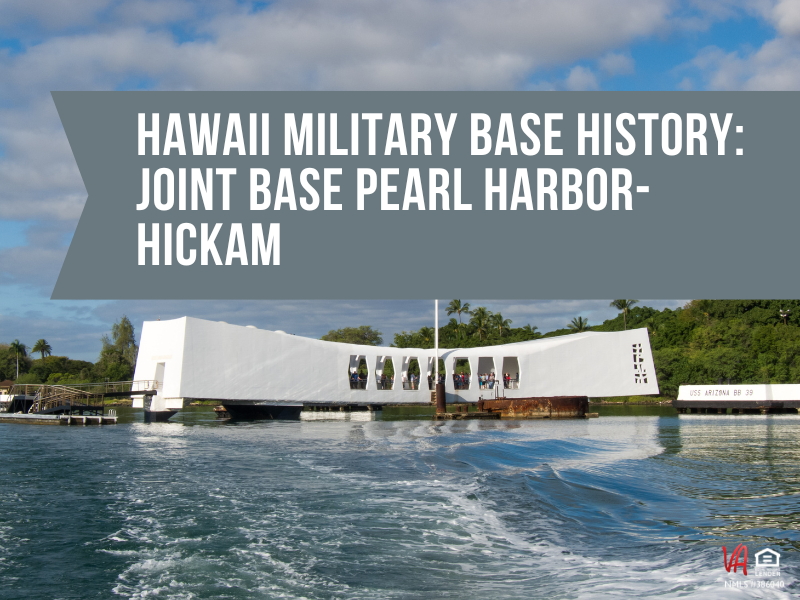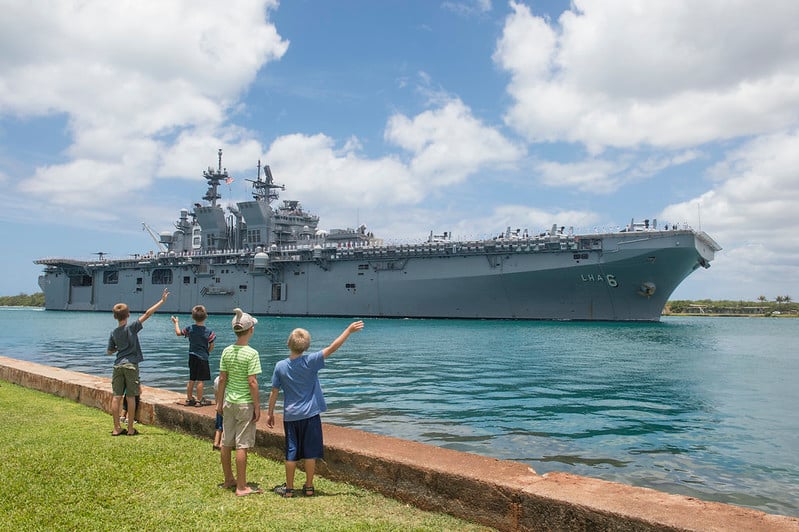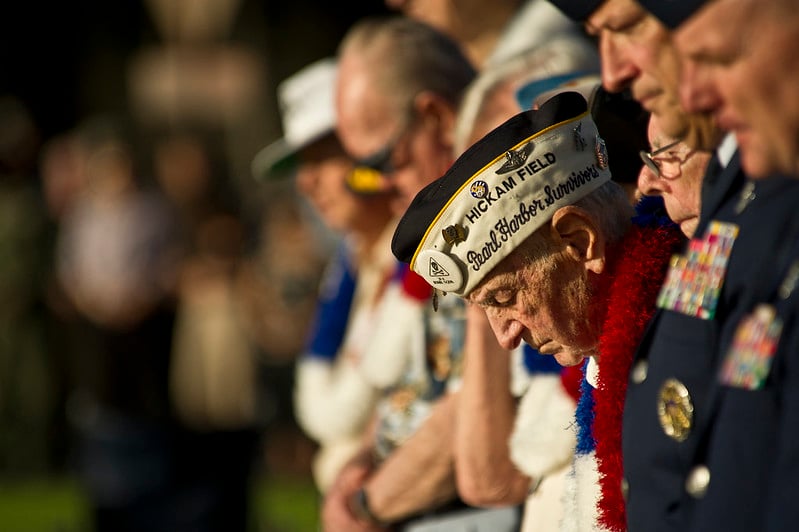Joint Base Pearl Harbor-Hickam is the larger of Navy Region Hawaii’s two installations. JBPHH is home to more than 175 tenant commands, 11 ships, 18 submarines and 6 fixed-wing aviation squadrons. Total base population is over 60,000+ Navy and Air Force active duty personnel, civilians and family members.

On Oct. 1, 2010, NAVSTA Pearl Harbor combined with Hickam Air Force Base to become Joint Base Pearl Harbor-Hickam (JBPHH) as part of the Base Realignment and Closure Commission Law of 2005, which specified realignment of 26 bases into 12 joint bases.
Joint Base Pearl Harbor-Hickam (JBPHH) combines two historic bases into a single joint installation to support both Air Force and Navy missions, along with tenant commands, and all service members and their families.
History
Pearl Harbor Naval Station and Hickam Air Force Base have grown up together around the historic port, known as Wai’momi to the native Hawaiians, on Oahu’s south shore. The naval station was constructed shortly after the turn of the 20th Century as the United States began to take an active interest in Pacific affairs. Hawaii’s central Pacific location made it an ideal base by which to promote America’s interests in the Far East and to protect the vital shipping lanes from the Panama Canal to the U.S. west coast and beyond to the western Pacific.

In December of 1911 the USS California, an Armored Cruiser, became the first large warship to enter Pearl Harbor and launch it into the future. Within a very few years a coaling station, shipyard, submarine base, naval magazine, Marine barracks, naval hospital and naval air station had been built.
Interestingly, it was the advent of aviation that drew the first connection between these two historic bases.

In 1917 the War Department purchased land on Ford Island for the construction of an Army air facility which would eventually be named Luke Field. In 1923 the Navy acquired the opposite side of the island and established a naval air station.
The two fledgling air bases would operate side by side until it was recognized that the Army and Navy air arms had grown sufficiently to warrant larger facilities. In 1934, the Army Air Corps oversaw the construction of a new air base on 2,200 acres of land adjacent to Pearl Harbor.
Hickam Field was completed and activated in 1938, becoming the principal airfield in Hawaii. For its part the Navy would now take ownership of the former Army facilities on Ford Island, which would become the home to the Pacific Fleet’s carrier operations.
Day of Infamy
In the 1930s the military presence on Oahu grew as the United States began to prepare for the eventuality of a confrontation with the ascending Japanese empire to the west. Hickam Field and Pearl Harbor’s naval station each played important roles in that preparation. In 1940, the Pacific Fleet would be homeported in Pearl to act as a deterrent to the expansionist desires of the Japanese military. The air field at Hickam saw a steadily increasing stream of aircraft being shuttled to America’s forward-most presence in the Philippines.
These strategic moves by the Americans were not lost on the Japanese, and as early as December of 1940, a bold plan was initiated: strike Pearl Harbor and so deal a crippling blow to American forces which would allow the Japanese Empire to occupy Southeast Asia and establish a bulwark of defensive bases in the islands surrounding Japan.
On the morning of Sunday December 7, 1941 the plan was unleashed as two waves of 350 aircraft from the Japanese combined fleet, positioned 230 miles north of Oahu, attacked the ships of the Pacific Fleet berthed in the harbor and Army and Navy aircraft parked at various installations around the island, including Hickam Field and Ford Island.

America’s military forces were caught completely off guard as plane after plane descended on their unsuspecting targets. In the end, the United States would suffer the loss of 2,403 Sailors, Airmen, Marines, Soldiers and civilians, and the battleships of America’s Pacific Fleet would lie at the bottom of Pearl Harbor, while U.S. air power lay in ruins scattered on Oahu’s airfields.
The story doesn’t end there, however, as America quickly mobilized for the long war ahead. Due to the incredible tenacity of the military and civilian workforce, of the 21 ships that had been damaged or sunk in the attack, all but three would be salvaged and take their place with the victorious naval forces that fought their way to victory in 1945. At Hickam the base would recover from extensive damage and serve the important role as the hub of the Pacific aerial network.
Following the war, the combined functions of the naval station and airbase would secure their place as important forward bases for the United States prosecution of Pacific security. During the Cold War the presence of America’s Pacific Fleet based in Pearl Harbor proved to be an invaluable asset in confronting the Soviet threat to America’s national security in the Pacific region. Between 1948-2010 the Air Force operated the renamed Hickam Air Force Base as the primary U.S. mobility hub in the Pacific, supporting U.S. operations by servicing transient aircraft and facilitating the deployment, return, and supply of service members in Korea, Vietnam, the Middle East, and on humanitarian missions.
Now that you’ve learned more about the history of Joint Base Pearl Harbor-Hickam, check out more information about the local area including surrounding neighborhoods, housing market, schools, restaurants and recreation at www.hawaiivaloans.com/pcs-hawaii.
Contact a VA Loan Specialist at 808-792-4251 or go to our secure online loan application to get pre-approved for your no down payment VA home loan and become a Hawaii homeowner!
Source: http://www.cnic.navy.mil/

